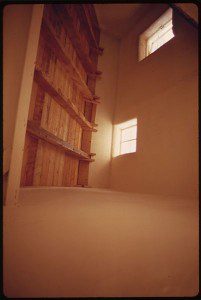
Here’s a side-by-side comparison of two Indexed Universal life (IUL) products with a focus on cash value accumulation and retirement income. This post compares Lincoln National‘s “Lincoln LifeReserve Index UL (2011)” to North American‘s “Rapid Builder IUL”. North American in my prior comparison outperformed Minnesota Life and John Hancock’s IUL products.
I will not give here a detailed look and the product features of each IUL, as for example, Lincoln’s cap on its 1 Year Point-to-Point is currently 13%. I will focus on the projects results of where affected by their internal rate of return, how the fees and expense charges affect the policy, assuming as much as possible apples-for-apples comparison: same death initial premium and death benefit. North American assumes a 8.30% return on its S & P 500 point-to-point; Lincoln assumes 8.45%, so these policies run fairly close in their assumptions. For an agent or a prospective buyer, reviewing full illustrations to see how this internal rate of return affects the policy in 20, 30 and 40 years, and by comparing values side-by-side with competing carriers is a very useful analytical tool.
Here are the assumptions:
44 year old male, best health rate, puts in $25,000 a year premiums for 20 years, then no further premium contributions. Structure minimum death benefit, here a starting face amount of $538,923, and still qualifying at tax advantaged life insurance under IRS rules for a modified endowment contact (MEC). In the next 20 years draws out the maximum in loans, which are not subject to taxation, for retirement income, and still target a $100,000 death benefit at age 120 or over. The index is S & P 500 annual point-to-point.
Each quote comes with a full illustration that charts a lifetime of policy values year by year. Here are some benchmarks for comparison:
Age 64 (year 20): cash value accumulation
Age 65 to age 84 (years 21-40) retirement funds, i.e. policy loans
Age 85 (year 41) death benefit amount
| Carrier |
Cash Value
Year 20 |
Death Benefit
Year 20 |
Loan amount
Years 21 – 40 |
Cash Value
Year 41 |
Death Benefit
Year 41 |
| Lincoln |
1,072,791 |
1,611,714 |
145,602 |
826,476 |
1,115,403 |
| North American |
1,144,104 |
1,683,042 |
147,248 |
658,775 |
981,056 |
What became noteworthy and crucial in the comparison were the loan rates and rules of each plan. North American offers a choice of loans at a fixed or variable rate. The variable rate is based upon Moody’s monthly bond average yield , which for October, 2011 was 4.60%. North American, presumably because the current rate is historically low, assumes by default a 5.60% rate for quotes, which I also used here. This run down will give you a look how the rate has changed over the last century. North American’s rate has a 4.00% floor and a 10.00% cap on their variable loan rate.
Lincoln had only one option a guaranteed fixed rate: 6% for policy years 1 – 10, and 5% for years 11 to age 100. What was noteworthy is how strongly the fixed rate returns performed against the variable rate. Other carriers including North American offer a fixed rate loan option but the loan payout numbers are not nearly as good as Lincoln’s. (Also interesting to note Lincoln had an option for the loans/withdrawals to be monthly, quarterly, semi-annual or annual, and the loans values were higher selecting the monthly option.)
For cash value accumulation strategy and to use policy loans for retirement income, the parameters of this comparison, Lincoln has a more favorable IUL product than North American. It would generally be much preferable to lock in a well performing fixed rate over the span of decades than be subject to downside risks of fluctuating rates.
For example, compare Lincoln fixed loan rate to North American with changes to the loan rate:
$145,602 5.00% fixed rate Lincoln
$147,248 5.60% variable rate North American
$130,920 6.60%
$124,853 7.00%
$110,775 8.00%
$92,123 9.00%
$70,351 10.00% maximum
$107,777 fixed rate Standard Policy Loan option North American
As you can see, North American variable loan rate would have to consistently stay at or below 5.60% in order to outperform Lincoln. That’s unlikely.
Carriers & Products:
Lincoln National Life Insurance Company: “Lincoln LifeReserve Indexed UL (2011)”
North American Company for Life and Health Insurance: “Rapid Builder IUL”
Image source: Wikipedia Commons
Disclaimer: Quotes were revised on 11/22/2011, and are correct and accurate to the best of my knowledge. Product features and rates are subject to change. Please contact the carriers directly for full details on these products reviewed. Tax information is general information only. Please seek professional tax advice for personal income tax questions and assistance.

